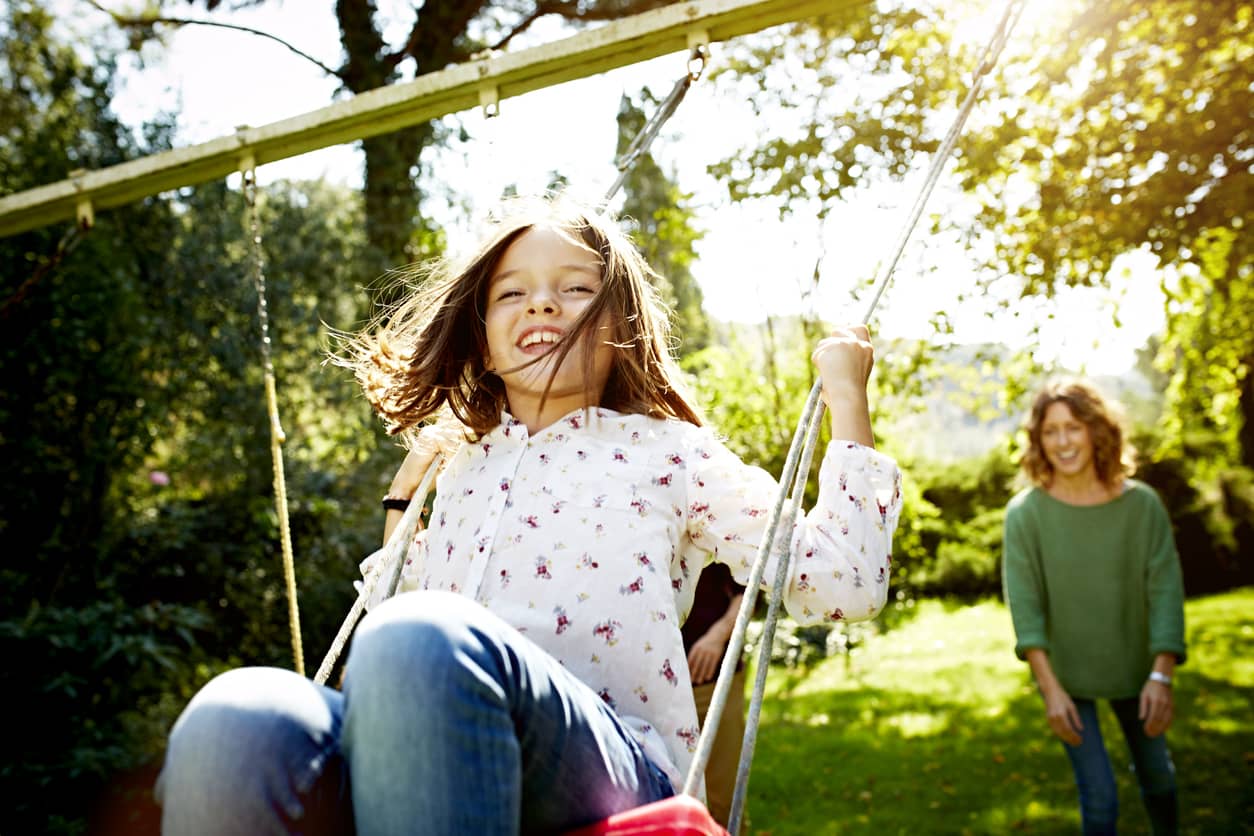Previously, we talked about three hidden parenting mistakes that increase people-pleasing behavior in children and how to avoid those mistakes. Now, let’s explore steps to encourage our children’s self-reliance and help them learn to take care of themselves without sacrificing their well-being through people-pleasing.
Estimated reading time: 5 minutes
 The primary way through which a child learns how to relate to themselves and to other people is through their relationship with their parents (or other primary caregivers). What you do as a parent, and how you interact and respond, both unconsciously and consciously, is integral in their development of healthy (or unhealthy) patterns of relating. And these patterns formed as children will also set the foundation for their adult relationships. No pressure!
The primary way through which a child learns how to relate to themselves and to other people is through their relationship with their parents (or other primary caregivers). What you do as a parent, and how you interact and respond, both unconsciously and consciously, is integral in their development of healthy (or unhealthy) patterns of relating. And these patterns formed as children will also set the foundation for their adult relationships. No pressure!
Below are key parenting tips that help to ensure helpful and meaningful interpersonal connections with your child.
Vital Parenting Tips to Help Your Child Self-Regulate and Learn Self-Resilience
TIP 1: Teach your child that each person is responsible for their own emotions and happiness.
One of the most important lessons to teach a child is that we are each responsible for our feelings and how we react to different circumstances in our lives. We are not responsible for others’ emotions despite having an impact on others.
As parents, we can assist our children to learn and accept responsibility for their emotions and happiness in the following ways.
Let children feel! As parents, don’t rush in to solve their conflicts or frustrations too quickly.
For instance, your child comes to you and moans, “I’m bored!” Many parents recite a litany of suggestions for ways their children can entertain themselves. However, without even realizing it, this is one of those hidden parenting mistakes. When we rush in to “solve” our child’s boredom, we don’t let them feel the discomfort long enough to learn how to self-soothe, exercise their initiative, and take responsibility for solving the emotional dilemma themselves.
What if you said instead, “what do you want to do about your boredom? Or “what is your boredom trying to tell you?”
Let them struggle a bit so they have the pleasure of solving their own problems and develop the resilience of being able to tolerate and regulate uncomfortable emotions and return back to balance. This message, consistently over time to our children, teaches them:
- that emotions are natural and tolerable
- emotions are their responsibility to attend to and self-regulate
- emotions communicate important information to them if they listen
The next action to encourage your child’s ability to care for themselves (while also considering others) is modeling taking responsibility for YOUR emotions.
Related reading: "What Is Resiliency and Why Parents Need It!"
TIP 2: MODEL for your children taking responsibility for your own emotions.
Children of all ages are sensitive to the moods and emotions of their parents, especially when parental behavior toward their child is mood-dependent, such as their parents fighting that scares a child or a parent over-reacting to their child’s behavior, such as snapping at a child when they’re stressed or tired.

For instance, dinner preparation is behind, siblings are quarreling, the dog hasn’t been walked and is hyper, and you have a long to-do list that’s stressing you. Then, your child drops a cup on the kitchen floor and it shatters. You yell at your child, blaming their carelessness for making you even more stressed out.
Parenting can be challenging, yet, parents are the most important teachers for children. And modeling is a powerful teaching tool. We have an enormous opportunity to show children how to respond instead of reacting, express our emotions appropriately, and take responsibility for our own feelings. When we self-calm and emotionally regulate ourselves, so that we can express ourselves intentionally and lovingly, we give children a healthy example.
When we’re self-regulating, instead of yelling at our child for dropping the cup, we recognize that we’re ready to blow. After making sure everyone is safe (and taking a few deep breaths), we might say out loud in our children’s earshot, “Boy, do I need a break! I’m going to sit on the porch and calm down.” We go outside and self-calm, coming back a few minutes later. Then, we cheerfully request our child to help with the clean-up and assist in finishing the dinner preparation.
Easier said than done, right?

Self-Calming Strategies
If you haven’t had a lot of practice in self-regulating, it may be helpful to have some additional understanding and tools to calm yourself. Let’s dig a little deeper into self-regulation.
The simple act of deep breathing will help down-regulate your stress response at a physiological level. Studies show that taking deep breaths holds the power to calm us.
This calming effect is because taking long and slow breaths deep into our bellies activates our vagus nerve. Supporting your vagus nerve through mindful practices or gentle stimulation can make a noticeable difference in how quickly your body returns to a calm state.
The vagus nerve regulates our sympathetic (fight/flight/freeze) and parasympathetic (rest/digest) systems (i.e., our stress response system). This system indicates whether we need to “fight” (e.g. yell at our child) or stay calm and respond intentionally. Deep breathing communicates to the emotional part of our brain that we're safe and slows the emotions.
After you calm your body through breathing, acknowledge and identify what you’re feeling.
Often, we push aside our feelings until they build or use feeling stuffers, such as blocking, shaming, or bucking up.
Instead, ask yourself, “What am I feeling?” Are you sad, frustrated, anxious, hurt, resentful, or angry? Just by naming what you’re feeling, emotions will begin to diffuse and integrate.

As you name emotions, continue to breathe in and out slowly.
Now that you’re calmer, check in with yourself: "What do I need to feel a little better?"
Perhaps you are feeling overwhelmed with getting dinner prepared and having more clean-up now with the broken cup and need to ask for help. Or maybe you need to step outside for a break before getting dinner prepared. Or you skipped lunch and need to grab a snack to tide you over until dinner.
You won’t know what you’re feeling until you pay attention to the feeling with gentle curiosity. This is important because without knowing how we are feeling, we can’t know what we need to feel better.
Give yourself the gift of inquiry with self-compassion.
Easier said than done?
When my children were very young, it was hard for me to be kind to myself (and I’ve heard that same difficulty from many clients as well). Back then, as a harsh taskmaster to myself, I learned a little trick. When I reminded myself that if I showed compassion to myself and practiced self-care, I’d be much more likely to be a loving mom, that worked to motivate me. This gentle reminder was a necessary steppingstone for me to practice compassion until I could do it from a place of self-kindness.
Remember, whatever you do for yourself, you’re also modeling and teaching your children.
When you’re compassionate with yourself, it’s more likely you’ll be loving and responsive to your children, too. When you allow and accept your emotions, it gives them permission to feel. When you show them that it’s possible to self-regulate, they know it’s possible for themselves.
And if you’d like to learn more about and practice self-compassion, here are a few exercises from Dr. Kristen Neff, an expert on the subject.

TIP 3: Model win-win outcomes that make everyone a winner.
It’s rare to grow up with parents who showed us how to resolve conflict successfully. Many of us either grew up listening to our parents argue and fight or never saw disagreement between them because they saved their disputes for when we weren’t around. Regardless, dealing with conflict effectively is a relational skill that every child, teen, and adult needs.
Let’s look at two different ways of handling a conflict between a parent and child.
PARENTING EXAMPLES
Encouraging People-Pleasing versus Encouraging Self-Reliance in Your Children
SCENARIO – Your 7-year-old child wants to play at the park after school. You have grocery shopping to do and feel stressed after working a long day. What do you do?
Parent Makes a One-Sided Decision
Child: “Mom, can we go to the park and play?”
Parent: “No, I have grocery shopping and I’ve had a long day at work.”
With this one-sided response, the child either resigns and gives up their desire deciding mom’s needs are more important or the child moves to a power struggle making the grocery shopping miserable.
Let’s look at another way of handling the child’s request in the same situation while considering both the parent’s and the child’s needs.
Parent Using Win-Win Solution
Child: “Mom, can we go to the park and play?”
Parent: “I have grocery shopping to do and it’s been a long day at work. If you are cheerful and helpful while shopping, we’ll go to the park for 15 minutes afterwards.”
By these simple shifts in your response, you model the importance of considering and meeting both of your needs. This kind of conscious parenting teaches children that everyone’s needs are important and that win-wins are possible. Thus, children don’t have to be a people-pleaser because they know how to negotiate a win for everyone.
 Parent Using Validation and Teaching Win-Win Problem-Solving to Resolve the Conflict
Parent Using Validation and Teaching Win-Win Problem-Solving to Resolve the Conflict
Child: “Mom, can we go to the park and play?”
Parent: “You love to climb and swing, and you’ve been cooped up all day at school. Hmm… I have grocery shopping to do and it’s been a long day at work for me. What can we do so we both can have our needs met?”
Child: “We could eat leftovers tonight and shop tomorrow. That way, you can relax and rest while I play, and you won’t have to cook dinner.”
Parent: “What a great idea! Thanks for thinking of that solution. Let’s head to the park.”
The above parenting response involves the child in problem-solving while also modeling validation of both individuals’ experiences and needs. By encouraging a child’s participation in problem-solving, power struggles are usually prevented, and you also give the child an excellent opportunity to learn how to create a win-win. Additionally, you send a strong message that their needs and desires matter and they can impact decisions through their input and ingenuity.
How Does this Parenting Approach Help Prevent People-Pleasing?
Parents who honor a child’s desires and needs while also honoring their own, teach children to speak up for their needs while also considering the needs of others.
Does this mean that a parent should always say yes to a child’s requests?
Nope, because saying no addresses another buffer to children developing people-pleasing behavior. In life, we don’t always get what we want, when we want it; therefore, it’s vital that children learn how to receive a no and handle the disappointment to build resilience. They also need to learn how to soothe their frustration when they don't get the result they want.
Parenting can be stressful so go easy on yourself when you slip up and get upset. Remember in those moments, you need self-care and compassion.
Choose one of the above strategies of conscious parenting and practice it consistently throughout the week. You’ll be surprised how minor shifts in behavior, practiced consistently over time, can lead to major changes that support both your well-being and the well-being of your relationships.
Related reading: "Why Being a People Pleaser Damages Relationships—and What to Do About It!"
Get Parenting Support
If you’d like parenting support or personalized parenting advice, contact us at Heartmanity. We are eager to help you learn parenting skills for greater ease and fun.









